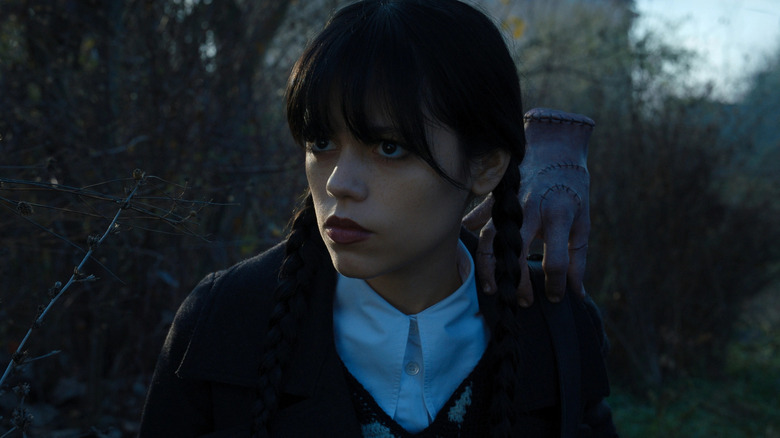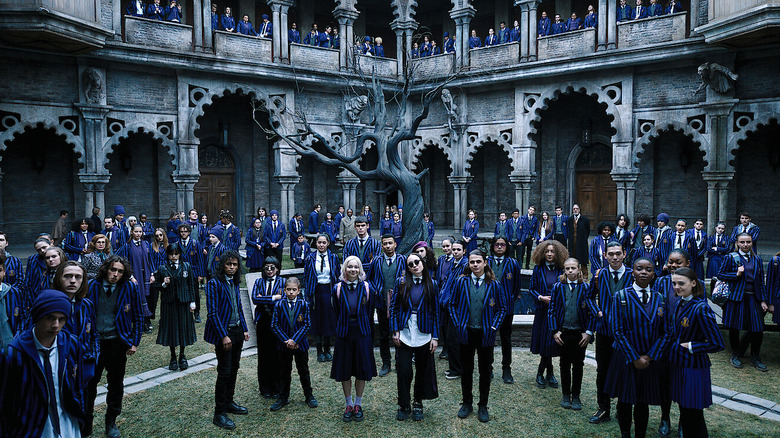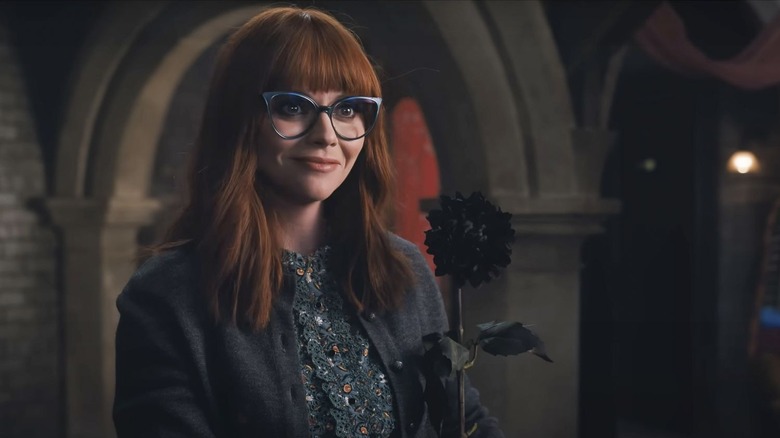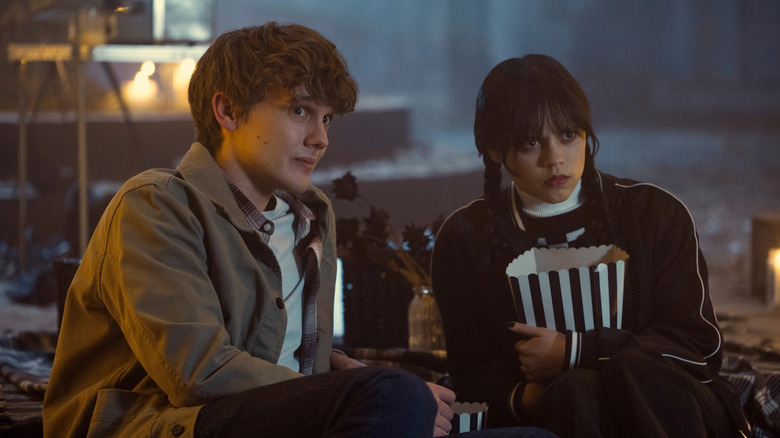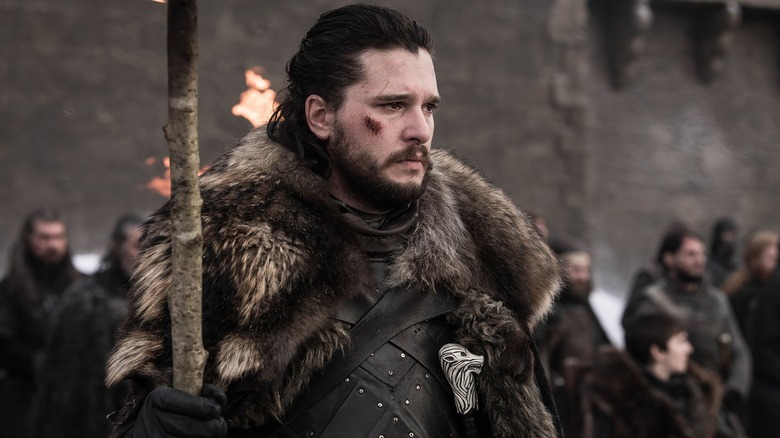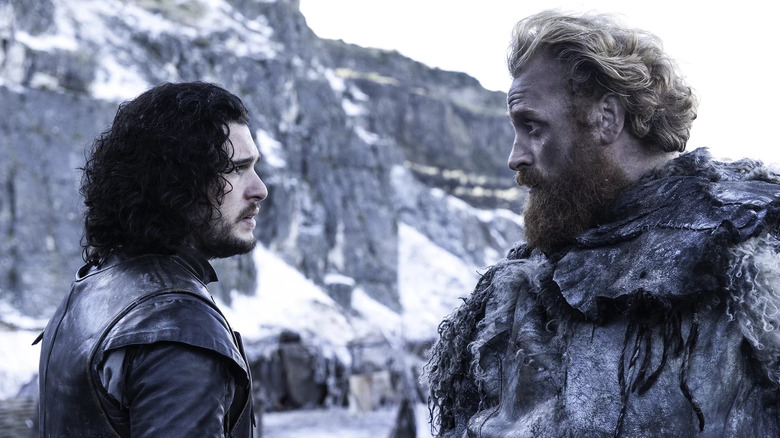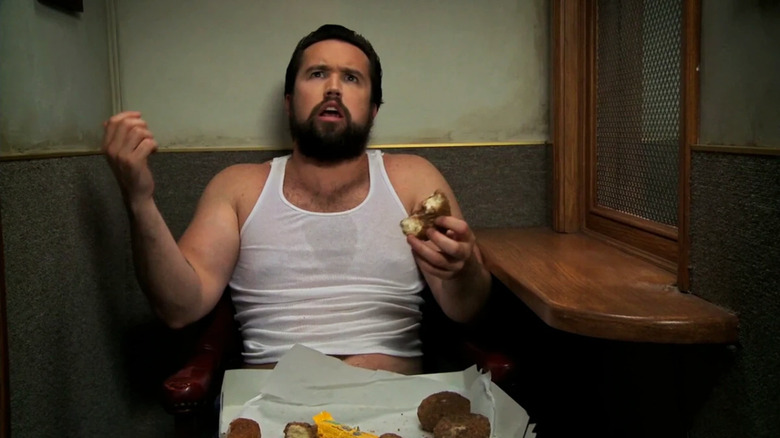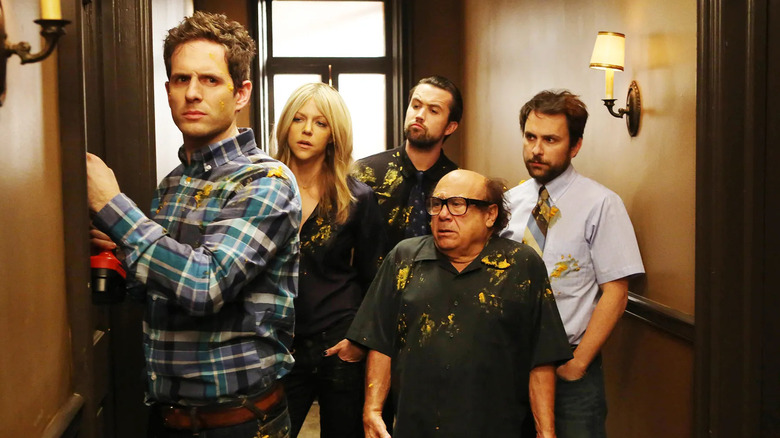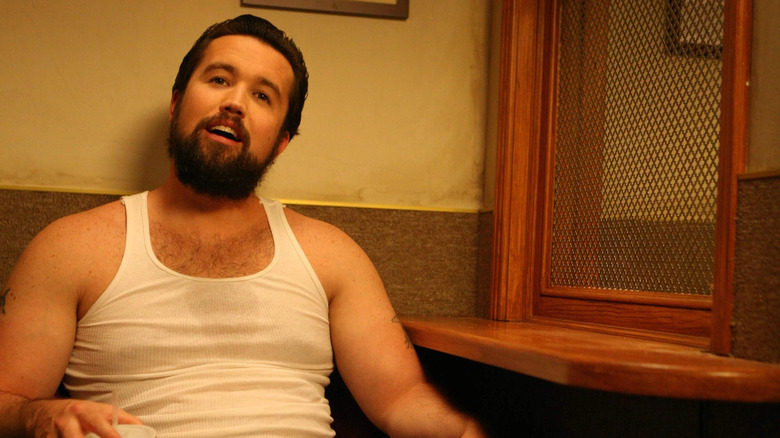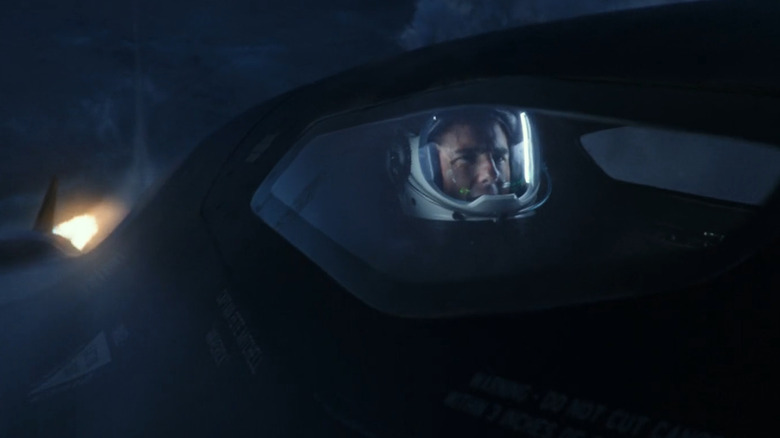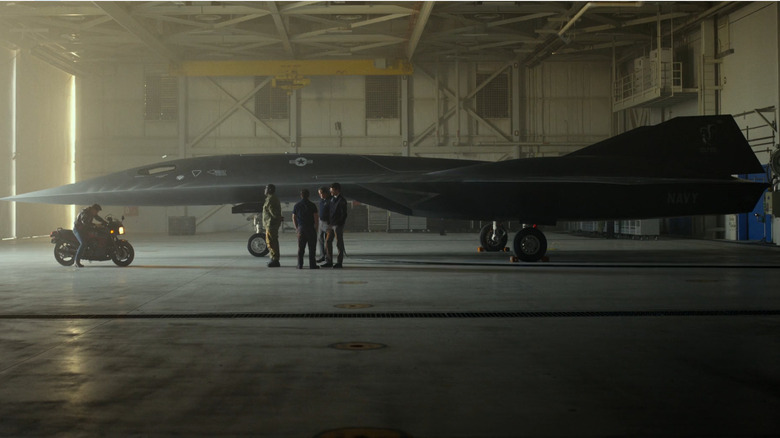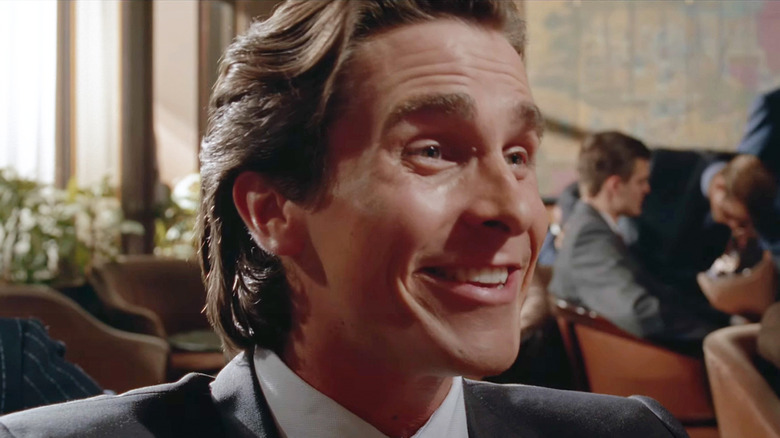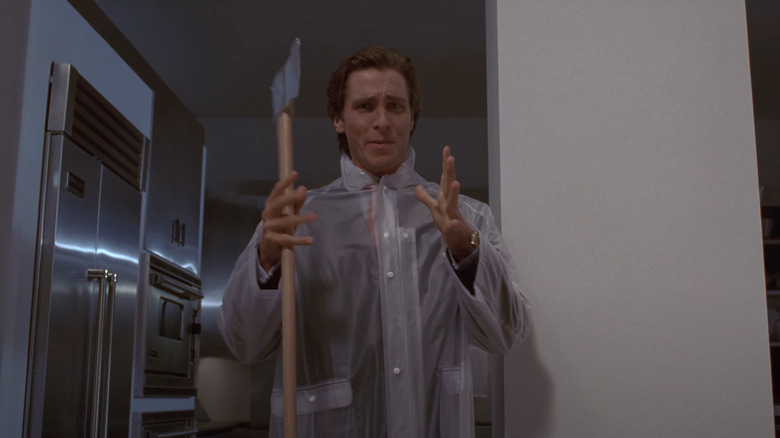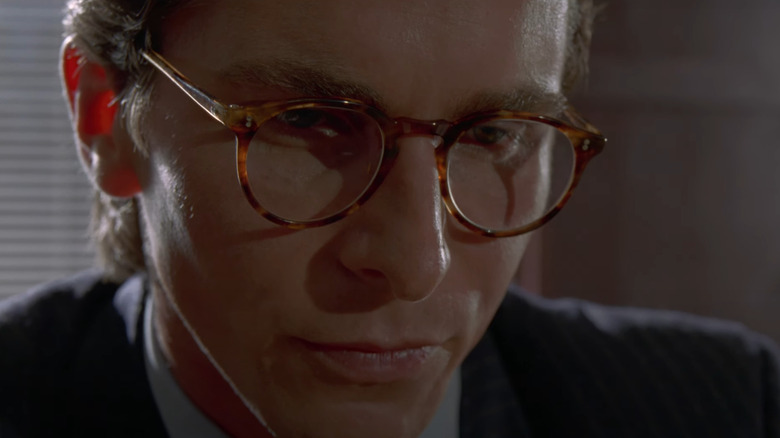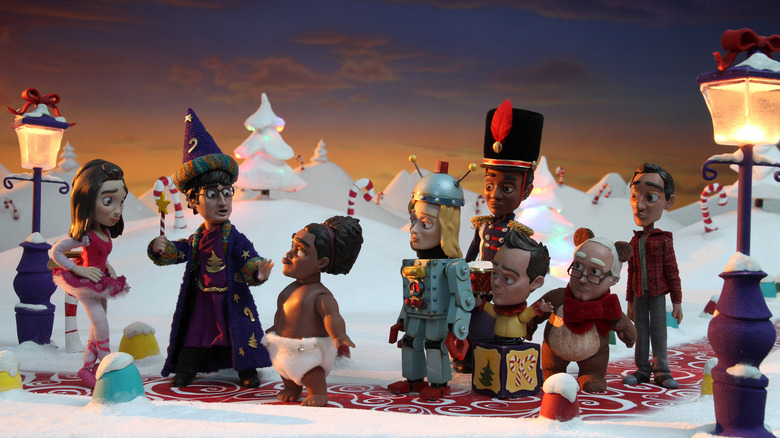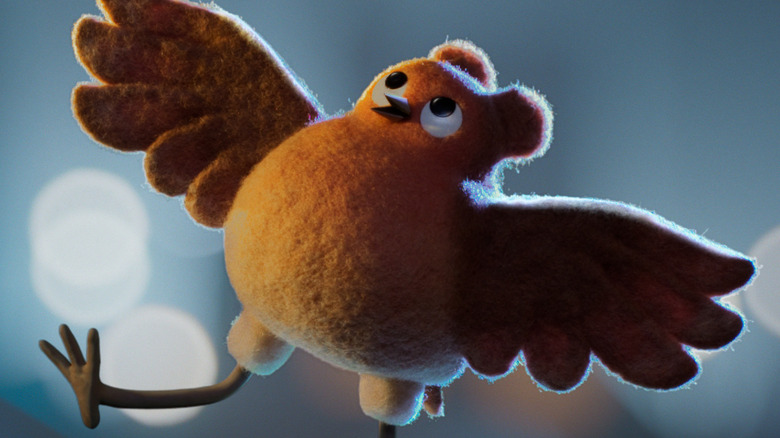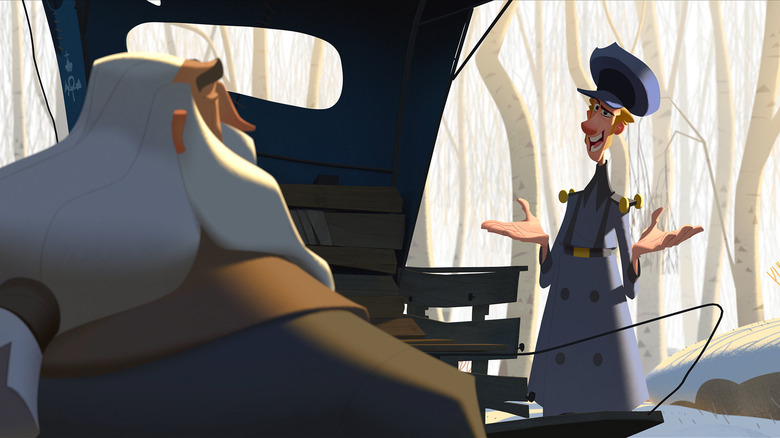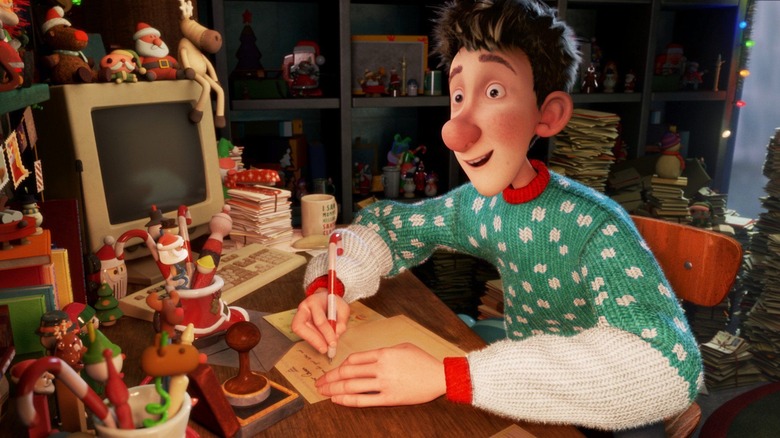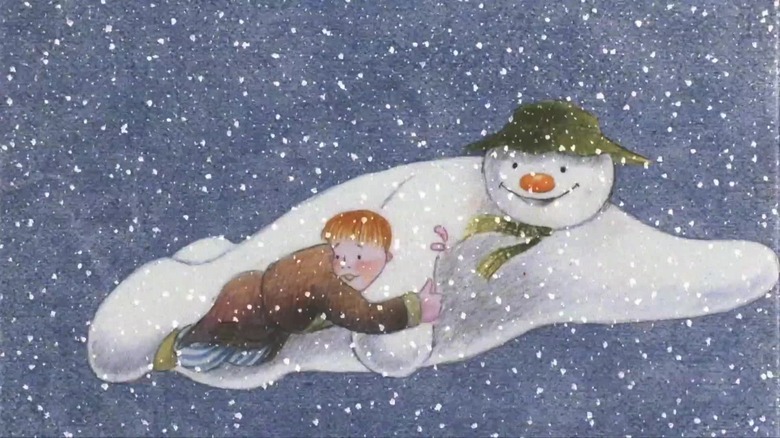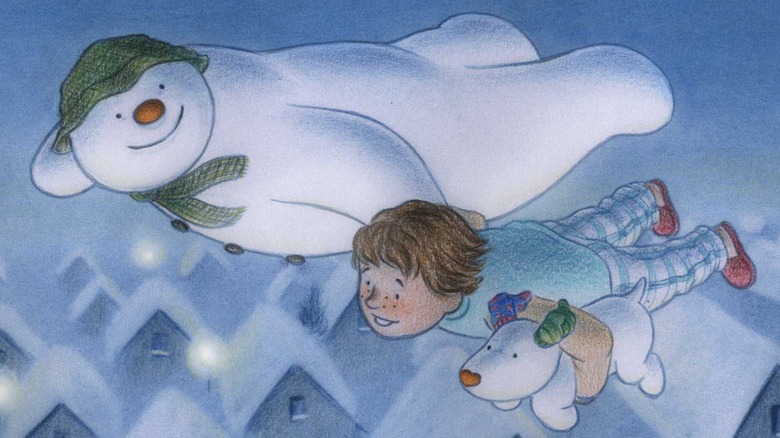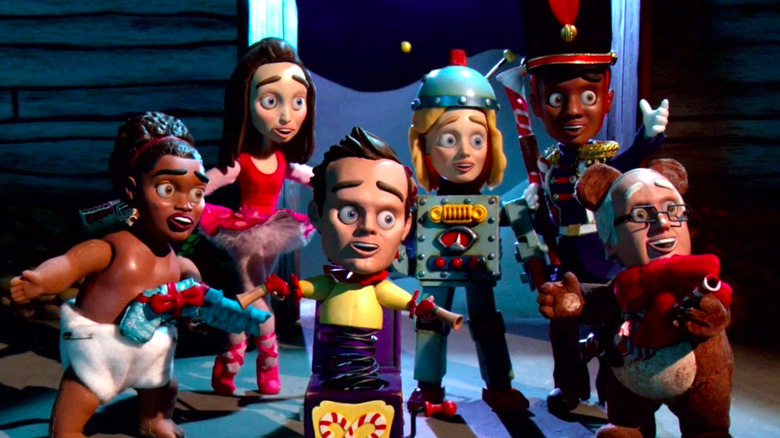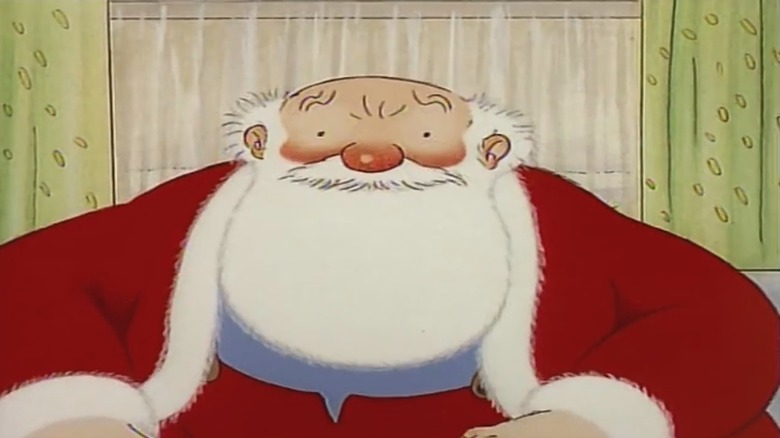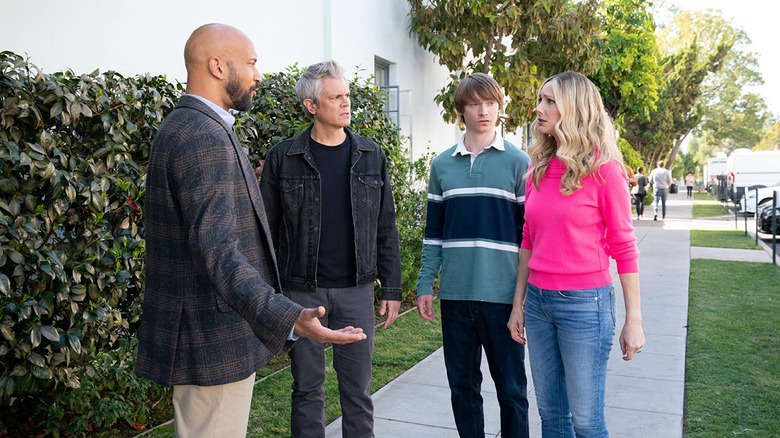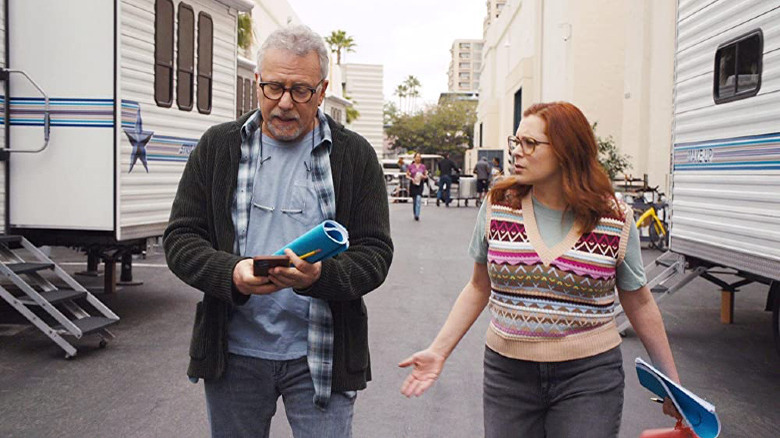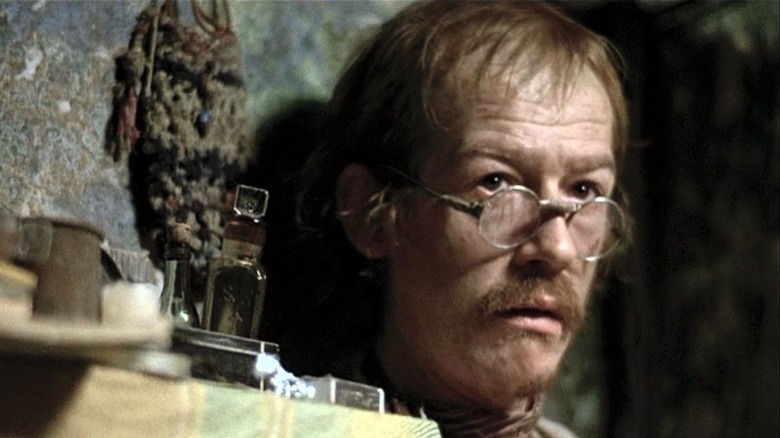
As one of Britain's most respected actors, John Hurt made an impression in even the smallest of roles. With his magnificent voice and distinctive appearance, he shone in every film in which he appeared, whether he was the lead or just making a cameo appearance. Even when he was the star, he invariably seemed more like part of the ensemble than a star in his own right like Sean Connery or Michael Caine. Perhaps this was due to his consummate professionalism and his ability to disappear into his roles. You never got the sense that he had much of an ego or, at the very least, cared less about personal vanity than making his characters feel authentic.
Below are just a handful of his finest film performances, ranked, although he had such a varied career that we could easily have made this a list of 20 best films and included his roles in movies as varied as "Heaven's Gate," "Snowpiercer," "Tinker Tailor Soldier Spy," and "Only Lovers Left Alive."
Hellboy
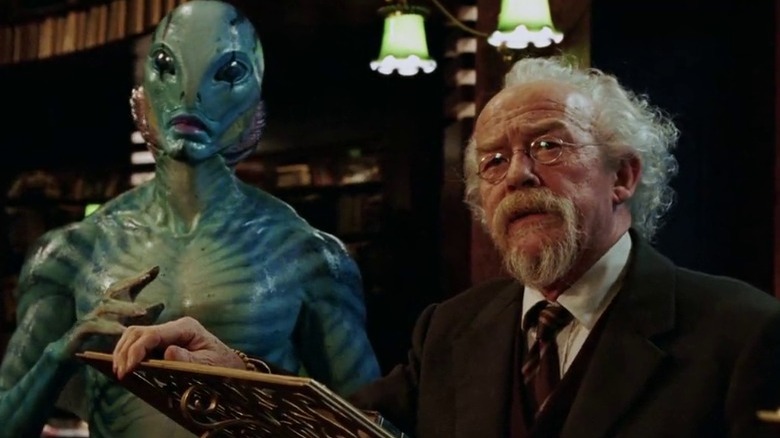
One of the highest-profile mainstream film roles of Hurt's later years was as Professor "Broom" Bruttenholm in Guillermo Del Toro's "Hellboy" series. Hurt brings a level of gravitas to the often outlandish plot turns and grounds the film in reality.
As the occult expert who first discovers Hellboy (Ron Perlman), he becomes a surrogate father for the demon child. There's a basic humanity to Hurt's performance that is quite touching. It's a relatively small but pivotal role. No sooner is Broom introduced than we learn that he is dying, so it was essential to cast an actor with sufficient presence to make an impact on the story and leave a hole when he inevitably leaves the film. Hellboy feels the loss of his father keenly, and his death galvanizes the film's second half.
There are no sentimental scenes between the two (when we first meet them, they aren't even speaking), and yet, there is never any doubt that Broom cares deeply about his adopted son. He treats Hellboy alternately like a renegade secret agent and like a stroppy teenager. Still, his final line sums up the love he has for his son. When Rasputin (Karel Roden) offers to tell him Hellboy's true name, he replies: "I already know what to call him ... I call him son."
A Man For All Seasons
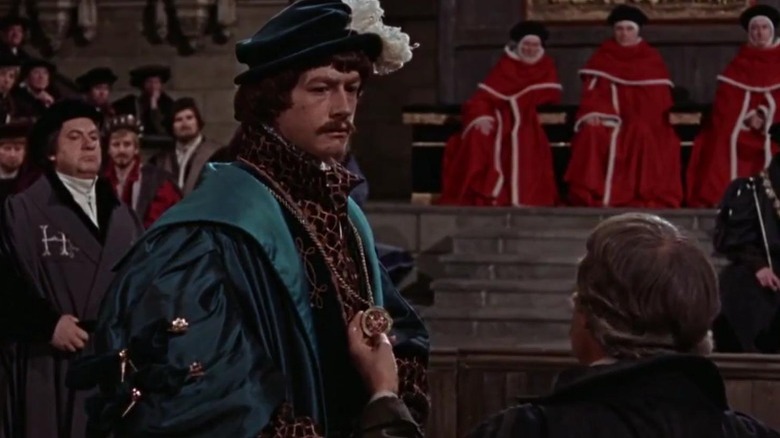
Hurt's first major film role was as Richard Riche in Fred Zinnemann's adaptation of the Anthony Shaffer play "A Man for All Seasons," which recounts the last days of Sir Thomas More (Paul Scofield). As written, Riche is a weaselly character. He ultimately gives the false testimony that seals More's fate. Yet, in Hurt's hands, he becomes someone to be pitied.
Hurt plays Riche as thin-skinned, petty, and mercurial but also longing for validation from More. You get the sense that he desperately wants to be on the side of good, but the lure of money and titles is just too much. Even when giving his fateful testimony, Hurt looks guilty and uncomfortable rather than sadistic or evil. He doesn't make him sympathetic. He makes him human and fills him with unattractive traits that we recognize in ourselves. More sums up Riche's betrayal best in their final interaction in court when he discovers that Riche has been bought with the title of Attorney General of Wales: "Why Richard, it profits a man nothing to give his soul for the whole world ... but for Wales?"
44 Inch Chest
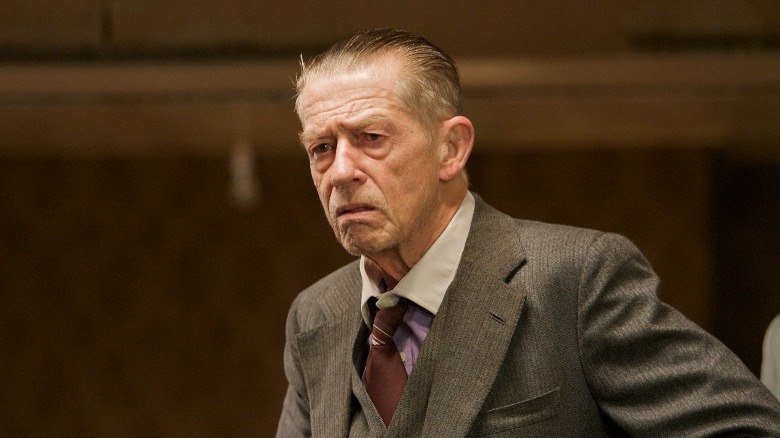
"44 Inch Chest" is not a particularly great film. It's predominantly set in one room as dodgy car salesman Colin (Ray Winstone) decides the fate of his wife's lover. Helping him make this decision are four of his closest associates (John Hurt, Ian McShane, Stephen Dillane, and Tom Wilkinson), each of whom represent a different facet of Colin's personality. As the foul-mouthed Old Man Peanut, Hurt has the most fun, embodying Colin's baser instincts.
Like Ben Kingsley in "Sexy Beast" or Ralph Fiennes in "In Bruges," there's something immensely enjoyable in watching a classically trained actor swearing it up. At its best, the film resembles an R-rated Pinter play. There's a lyricism to the cursing on the same level as Martin McDonagh, and Hurt is a natural at dropping profanity-laden speech. The interplay between the five principle actors is dynamite, and the quick-fire dialogue as they pile abuse on the poor wretch they plan on killing is equal parts funny and disturbing.
Peanut himself is a dying breed, an old-school gangster who spews vile profanities while clinging to an absolute, puritanical morality. He makes numerous biblical references, including one comically misogynistic take on Samson and Delilah. And yet, there's a darkness in Peanut that is evident in the chilling threat he mutters to Colin on his way out: "You dare get emotional. You dare."
Watership Down
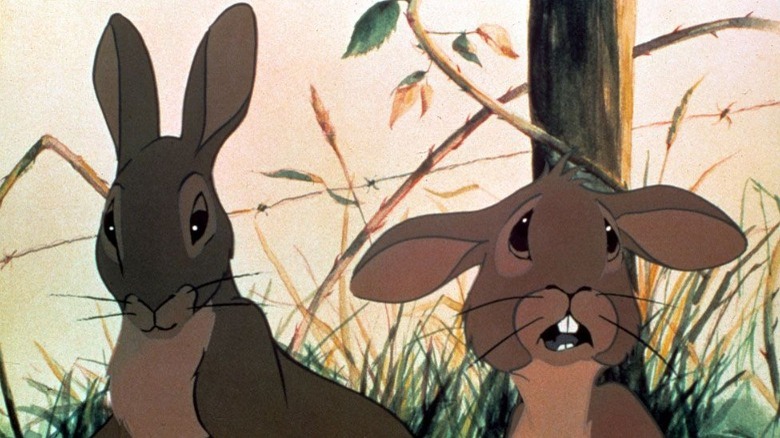
If there's one thing that John Hurt was known for, it was his voice — that rich, distinctive, beautifully gravelly whisper, described by The Guardian as "nicotine sieved through dirty, moonlit gravel." On the surface, you would think that would make him an ideal villain, and indeed, he was a spectacularly disturbing baddie as the Horned King in "The Black Cauldron." Yet, there was an understated warmth in his voice that made him even better suited for heroic roles. Indeed, Hazel in "Watership Down," the leader of a group of rabbits who leave their warren when one of their number has a premonition that their home will be destroyed, might be the most heroic role of his career (even more than Aragorn from Ralph Bakshi's "Lord of The Rings").
"Watership Down" is a classic fantasy story, and in many ways, Hazel is the epitome of a traditional hero: level-headed, understanding, and selfless. Hurt gives a wonderfully soft and gentle vocal performance, but there's a steely determination beneath it that is perfect for the natural leader who quietly inspires loyalty in his followers. It's a great turn, and it's impossible to make it through the final scene without welling up.
The Proposition
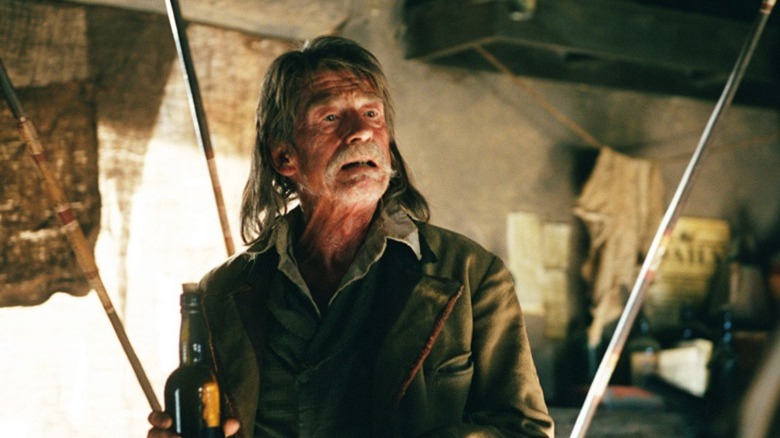
John Hurt only appears in two scenes in John Hillcoat's incredibly bleak poetic Western, "The Proposition," but they're all he needs for his bounty hunter to make an indelible impression. A theatrical, verbose, racist drunk, he makes Jellon Lamb a charming character. We first meet him spryly bounding out of the darkness to sing "Danny Boy" to reticent outlaw Charley Burns (Guy Pearce). Getting increasingly drunk, Lamb subjects Charley to monologues on a variety of subjects, waxing lyrical about Australia, Charles Darwin, and the object of his hunt, the psychopathic bandit Arthur Burns (Danny Huston), who also happens to be Charley's brother.
Incongruous as he may seem, "The Proposition" wasn't Hurt's first Western, having previously appeared in "Dead Man," "Heaven's Gate," and "Wild Bill," but he's most memorable here. He is the film's most colorful character, and while it's a shame that his appearance is necessarily brief, there's something beautiful in the look of recognition he gives to Arthur after he's been shot. He sees a fellow poetry lover as Arthur finishes the George Borrow poem Lamb had begun reciting as his epitaph.
Rob Roy
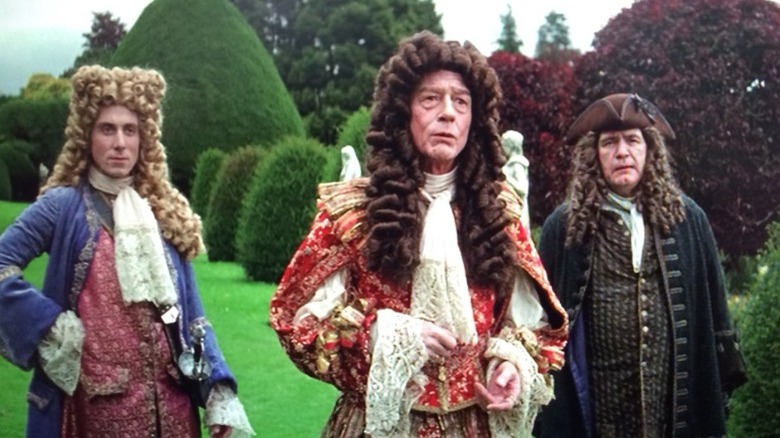
"Rob Roy" may have the best trifecta of British villains in cinema history, with John Hurt, Tim Roth, and Brian Cox competing to be the most contemptible character in the film. Roth gives the more overtly villainous performance as the vile Archibald Cunningham, but you can at least see the basis of his character. He's a monster created by Hurt's callous aristocrat. Hurt seems to channel the icy disdain of Maggie Smith as the Marquis of Montrose, flashing crocodile smiles at his peers but sneering and barking orders at everyone else.
What makes Montrose interesting as a villain is how he clearly understands that Cunningham has stolen from him, and yet, he treats this with indifference while bristling at the claims of integrity and honor made by Robert Roy MacGregor (Liam Neeson). His villainy comes not from any malice but a realistic kind of superciliousness. He doesn't have a personal grudge against MacGregor. He's just affronted by the claimed moral superiority of somebody he considers to be beneath him. That's something that comes up repeatedly throughout the film. Whenever it seems like Montrose might listen to reason, MacGregor brings up honor, and the Marquis' derision for the very idea clouds his reason. He's an imperious, cunning character, and Hurt plays this casual arrogance perfectly.
1984
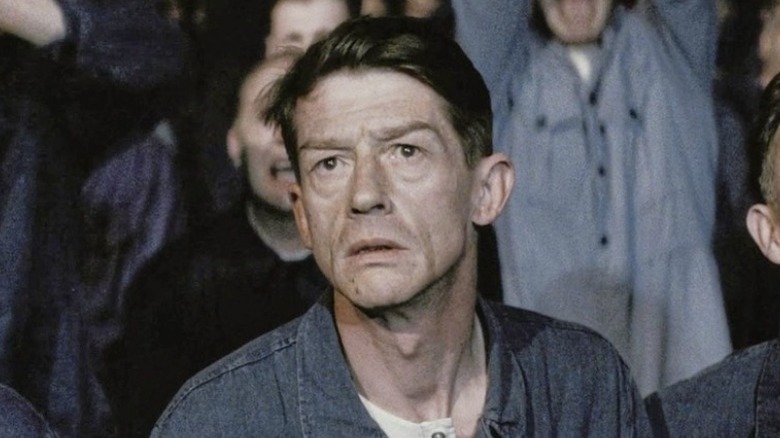
It might be impossible to do justice to George Orwell's seminal "Nineteen Eighty-Four," but Michael Radford's film comes close. Like Gregory Peck as Atticus Finch and Anthony Perkins as Josef K in "The Trial," John Hurt makes a perfect Winston Smith. Hurt made such an indelible impression as the craggy-faced actor with the raspy voice in his later years that it's easy to forget that, when he was younger, he had delicate features and a positively angelic look. It was during the early '80s that hard living began to take its toll, and this is crucial to his success as Smith. His face is lined, cautious, and wary, and yet, there is still a youthful idealism behind his eyes. He plays Smith as meekly compliant but with a positivity that belies the nature of the film, spelling doom from his first appearance.
It's an oppressive film and not particularly subtle, but Hurt embodies the hopelessness of Orwell's novel perfectly. What makes his Winston all the more relatable is the very real intelligence of his character. He knows what he's getting into and does it anyway. His utter terror inside Room 101 is palpable ("Do it to her!"), and the film makes the systematic dismantling of his personality frighteningly realistic.
10 Rillington Place
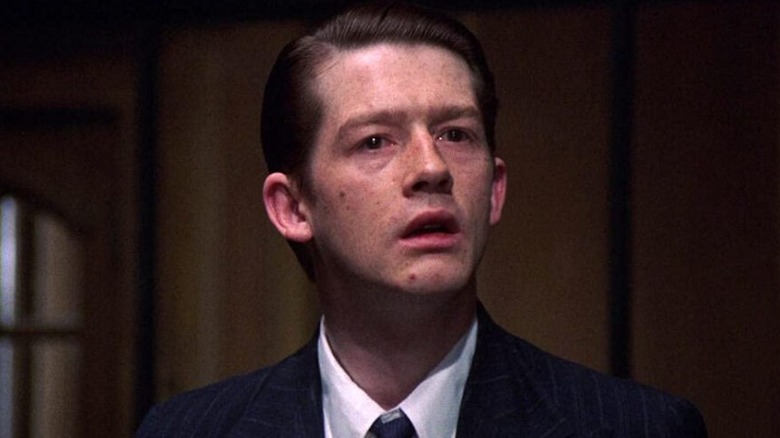
This chilling true-crime film features a terrifying turn from Richard Attenborough as serial killer John Christie, the embodiment of the notion of "the banality of evil." John Hurt plays Timothy Evans, the particularly guileless husband of one of Christie's victims, who is masterfully manipulated by Christie right into the hangman's noose.
The polar opposite of his sharp, intelligent character in "Nineteen Eighty-Four," the beauty of Hurt's performance as Evans is that he avoids making him overly simple. Instead, he plays him with a naivety that seems painfully authentic, whether it's his grief at his wife's death, his credulity at Christie's suggestions, or his all-too-plausible confusion while in police custody that seals his doom. Hurt makes Evans hopelessly trusting but not exactly stupid. It's just that events move faster than he can keep track of. Hurt plays his stunned disbelief beautifully. The look of betrayal on his face and his dumbfounded reaction feel incredibly realistic.
The film doesn't shy away from Evans' less sympathetic attributes, but it's impossible to not feel for him as he plaintively cries out "No, Christie done it!" His execution, shot coldly without soundtrack or fanfare, is just chilling.
Alien
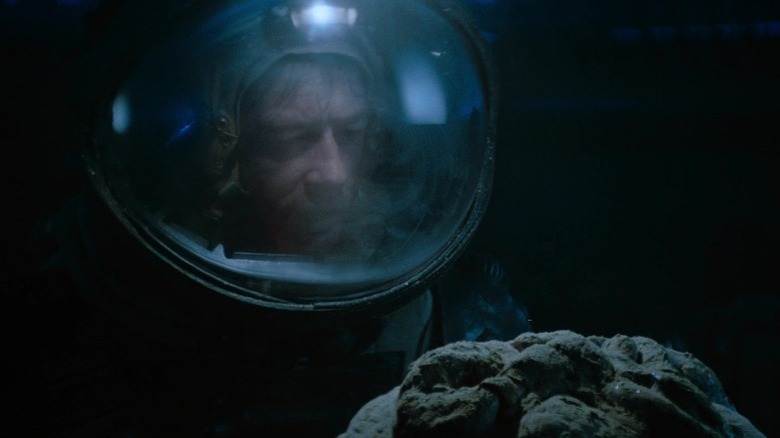
John Hurt's character, Kane, isn't around for much of the action in "Alien," going out with what might be the most iconic death in cinema history. What works best about Kane's shocking death is Hurt's utterly committed performance. He looks genuinely wracked with pain as he writhes on the table, veins sticking out of his neck, and screaming as his crewmates hold him down.
Kane is the first crew member we meet. He wakes from hyper-sleep looking angelic, appearing for all intents and purposes as if he might be the lead. He's established as level-headed, well-liked, and a bit of a fortune hunter. When he quickly volunteers to explore the abandoned spacecraft, Captain Dallas (Tom Skerrit) responds with a weary, "Yeah, that figures." It might seem a minor point, but it establishes his role as a risk-taker and explains why he'd put his face so close to the fateful Alien egg.
It's easy to reduce his entire role to that death scene, but Hurt makes Kane a likable character and makes you feel the loss and the shock of his explosive death. My favorite moment is his recounting his memories before the facehugger attacked him — the haunted look on his face as he says, "I remember some horrible dream about smothering..." is particularly eerie.
Love And Death On Long Island
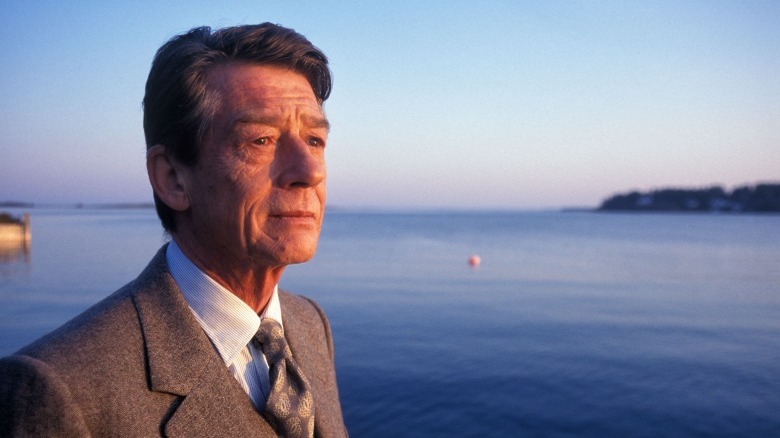
John Hurt considered his performance in "Love and Death in Long Island" among his very best, and it was a source of severe disappointment that it wasn't better received worldwide. He plays a world-weary screenwriter who finds himself inexorably drawn to a beautiful young matinee idol (Jason Priestley), eventually tracking him down and insinuating himself into the young actor's life.
The film is a mix of "Death in Venice" and "The Talented Mr. Ripley" but more light-hearted, even if the overall tone is bittersweet. There's never any sense that Hurt's infatuation is comic or to be mocked, but it's also never made creepy or sinister. It's an ineffable attraction that he doesn't seem to understand. It's a tricky needle to thread, but Hurt plays it with an earnestness that is often incredibly moving, making it impossible to dislike his character. It's clear that he is somewhat in denial or, at least, oblivious to the nature of his attraction, and Hurt's performance is full of wit, longing, and sadness.
The Naked Civil Servant
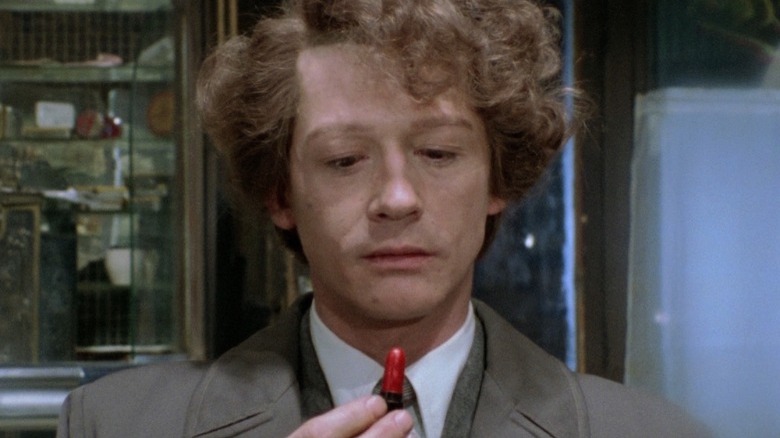
As well as making his mark on cinema, John Hurt had several iconic performances on television, including the mad emperor Caligula in "I, Claudius" and the War Doctor in "Doctor Who." Towering above these is his seminal depiction of Quentin Crisp in "The Naked Civil Servant."
Made when it was still career-threatening for an actor to play a gay character, Hurt gives an incredible performance as Crisp. It's more than a mere imitation, he fully embodies the role. He's incredibly funny when dropping sardonic one-liners like "I am one of the stately homos of England," but even more impressive is the vulnerability he gives the character. Quoting a letter he received from screenwriter and playwright Robert Bolt, Hurt expressed the power of the film lies not in the details of the character but in "the tenderness of the individual as opposed to the cruelty of the crowd."
Crisp himself approved of Hurt's portrayal, albeit in his own inimitable way: "Mr. Hurt always plays me ... In 'I, Claudius,' he played me in a toga, and in 'The Elephant Man,' he played me with a paper bag over his head." While this is an exaggeration, there isn't another actor of the era who could have captured Crisp's charm, vulnerability, and courage in quite so an affecting way.
Midnight Express
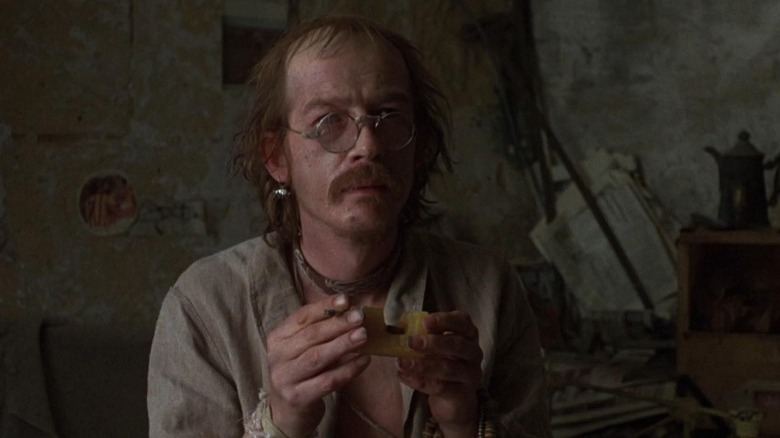
I've never really liked Alan Parker's "Midnight Express," the story of an American drug runner imprisoned in a brutal Turkish prison. It's all a little overwrought, a little labored, and that's not even getting into the inaccuracies in the story or the questionable depiction of all the Turkish characters as corrupt or venal. It's a broad, obvious film with over-the-top performances across the board.
It's ironic, then, that the most outwardly eccentric character is played with such subtlety. John Hurt's mousey, emaciated British convict Max is the only character in the film who comes across as a real person. He's utterly convincing as a heroin addict and at once witty ("I think I can hear dead Christians singing") and tragic. Hurt gives the most natural, understated performance in the film, and he elevates every scene in which he appears. The scene in which he finds his cat murdered and the non-verbal goodbye he gives to Billy (Brad Davis) when he learns he is escaping are beautifully observed. He doesn't say a word, but his mournful expression is heartbreaking. At least this time, his performance was recognized by audiences and critics alike, earning his first Oscar nomination for best supporting actor and winning both a BAFTA and a Golden Globe.
The Elephant Man
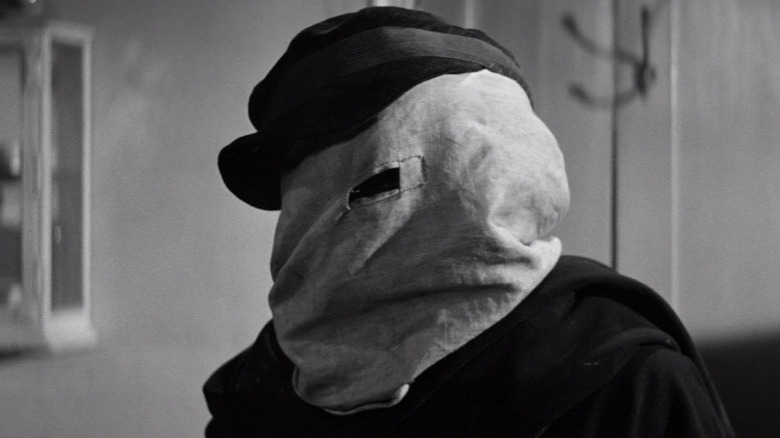
Perhaps the role that most people associate with Hurt, John Merrick remains the most achingly humane performance in his filmography. "The Elephant Man" is an unconventional David Lynch film in its conventional narrative: the story of John Merrick (Hurt), a disfigured man in Victorian England, who is saved from a life of exploitation in a circus by the benevolent surgeon Frederick Treves (Anthony Hopkins). It could so easily have been a saccharine mess, but what's fascinating about Hurt's performance, even more than the challenge of emoting from under heavy prosthetics, is the way he refuses to play Merrick as a victim.
There is a sensitivity and dignity in his performance that is genuinely touching. Hurt portrays Merrick's inner strength magnificently. This is demonstrated best in the moments when he seems to forget about his appearance. The scene with Treves' wife (Hannah Gordon) is particularly poignant, as he talks so effusively about his mother that it moves her to tears, and Merrick doesn't seem to comprehend what's happened. Hurt imbues the character with such delicate sensibilities and humanity despite his violent upbringing that it's impossible to not be devastated by each subsequent scene.
Scandal
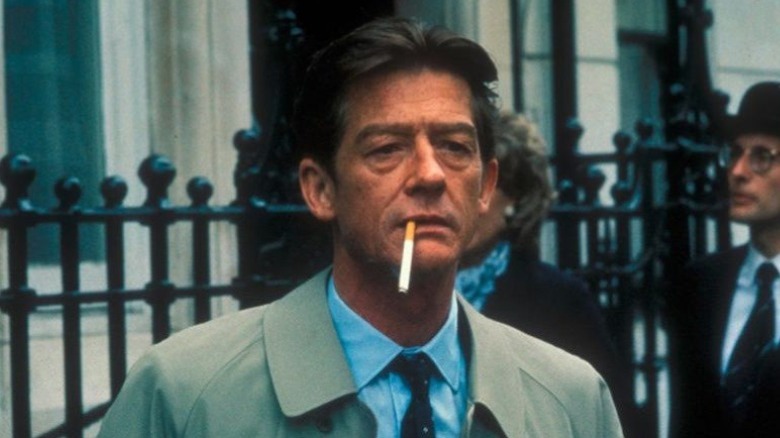
Michael Caton-Jones' "Scandal" is an overlooked gem, and its success is largely due to John Hurt's witty, acidic performance. The Profumo Affair was one of the most notorious British scandals of the '60s, as the UK secretary of state, John Profumo (Ian McKellen), was revealed to be having an affair with 19-year-old model Christine Keeler (Joanne Whalley). A central figure in the scandal was osteopath and social climber Stephen Ward, who essentially acted as a fixer, introducing young women to influential people.
Since the real Ward was something of an enigma, there was virtually no information available to draw inspiration from, so Hurt essentially had to create the character from scratch. The film never judges Ward for his actions, but it also doesn't sanitize him to be more palatable for audiences. He remains a complicated figure but ultimately a pitiful one, and Hurt plays each facet of this characterization to perfection. He makes Ward a gleefully amoral, hedonistic character, skewering the pomposity and hypocrisy of the social elite, but he also plays him with a sensitivity that's often genuinely moving. He's charming, delightfully lewd, and sadly accepting of his fate as a scapegoat, even giving Keeler a melancholy smile from the dock.
The Hit
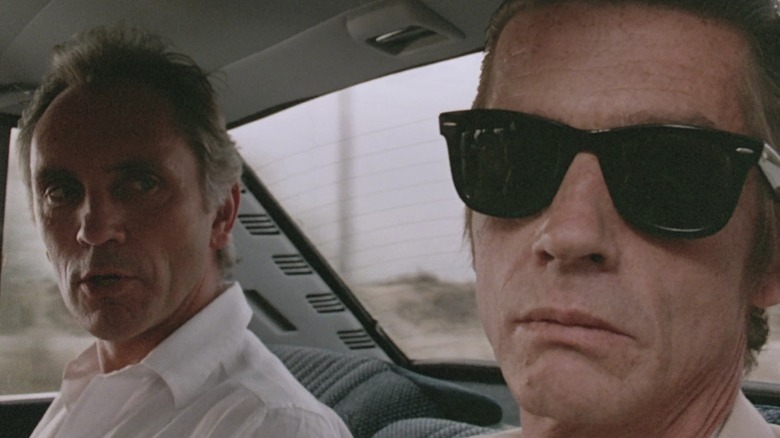
Terence Stamp plays the ostensible lead in Stephen Frears' underrated British gangster film, but it's John Hurt's turn as an inscrutable hitman that sticks in the memory. "The Hit" is a kind of meditation on death and the different ways of approaching mortality. Stamp plays Willie Parker, an informant hiding in Italy who is being brought back to London by Braddock (Hurt) and his accomplice Myron (Tim Roth in his feature debut). As they travel towards the French border, the two hitmen become increasingly unnerved by Willie's calm, philosophical attitude.
Impeccably dressed in a white linen suit and sunglasses that obscure his features, Braddock is a ruthless, unsmiling professional. As the story progresses, Willie's ambivalence becomes less intriguing than Braddock's apparent crisis of confidence, beginning with an uncharacteristic moment of mercy when he spares a witness (Laura Del Sol). Hurt elevates what could have been a standard tough guy role into something infinitely more interesting. Once his sunglasses are off, we see the doubt in his eyes, his curiosity at Del Sol's determination to survive, and even a hint of sadness that his life has turned out this way.
He is brutal and unsympathetic, and yet, Braddock emerges from the film as the only male character with any kind of dignity, approaching his death with a stoicism that's largely absent elsewhere. He dies with a knowing wink as if he appreciates the irony. It's a subtle, enigmatic turn from a great actor that should be more widely recognized.
Read this next: The 15 Best Anthony Hopkins Roles Ranked
The post The 15 Best John Hurt Films, Ranked appeared first on /Film.
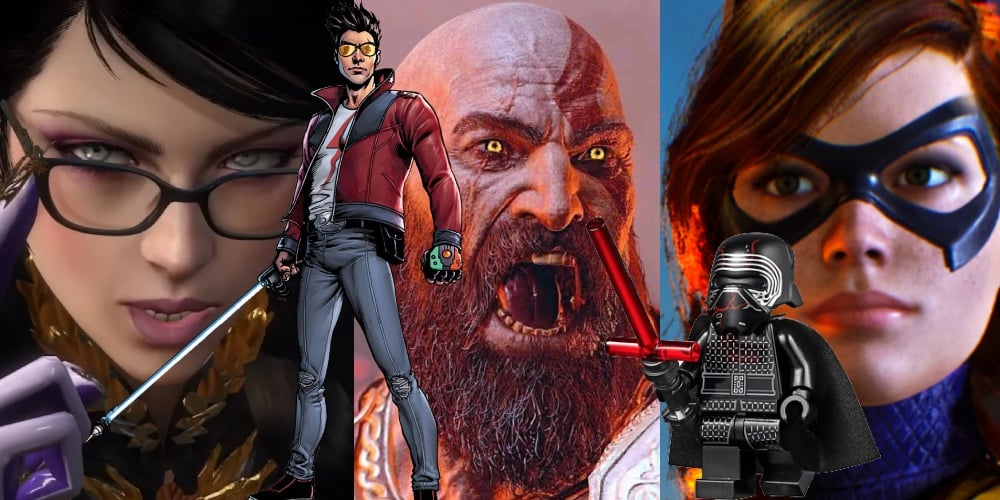
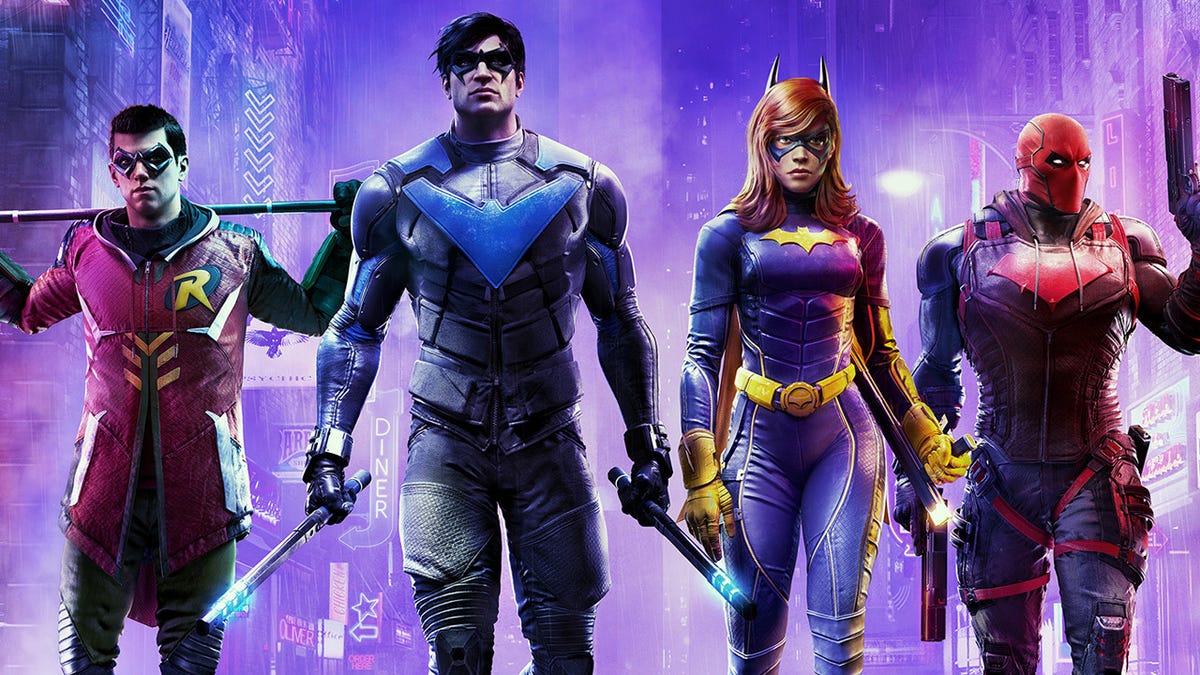


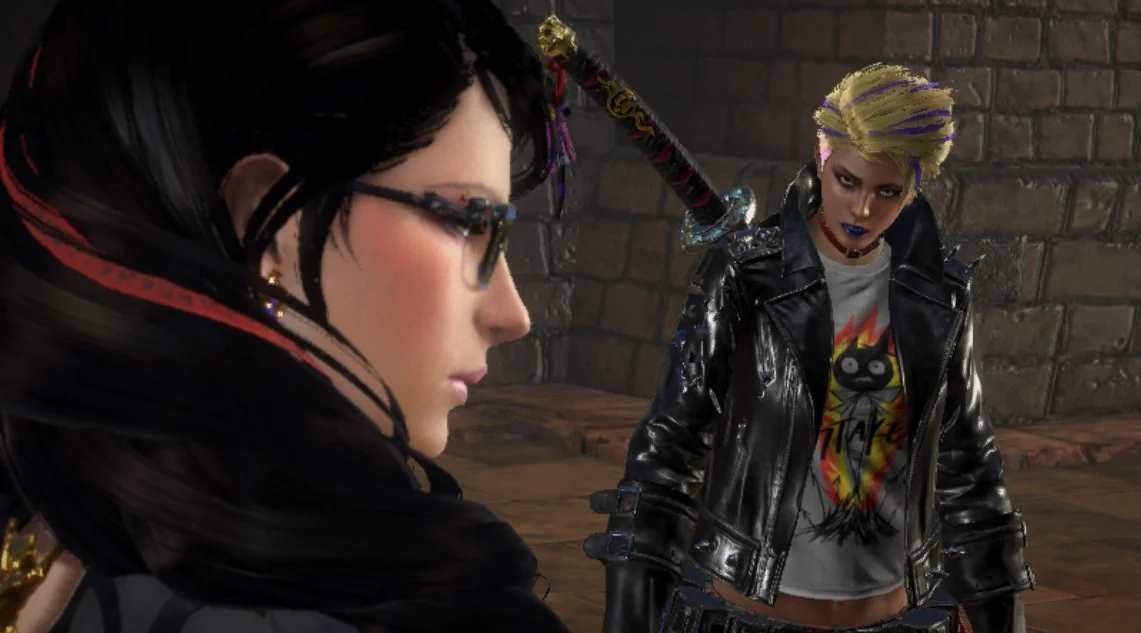
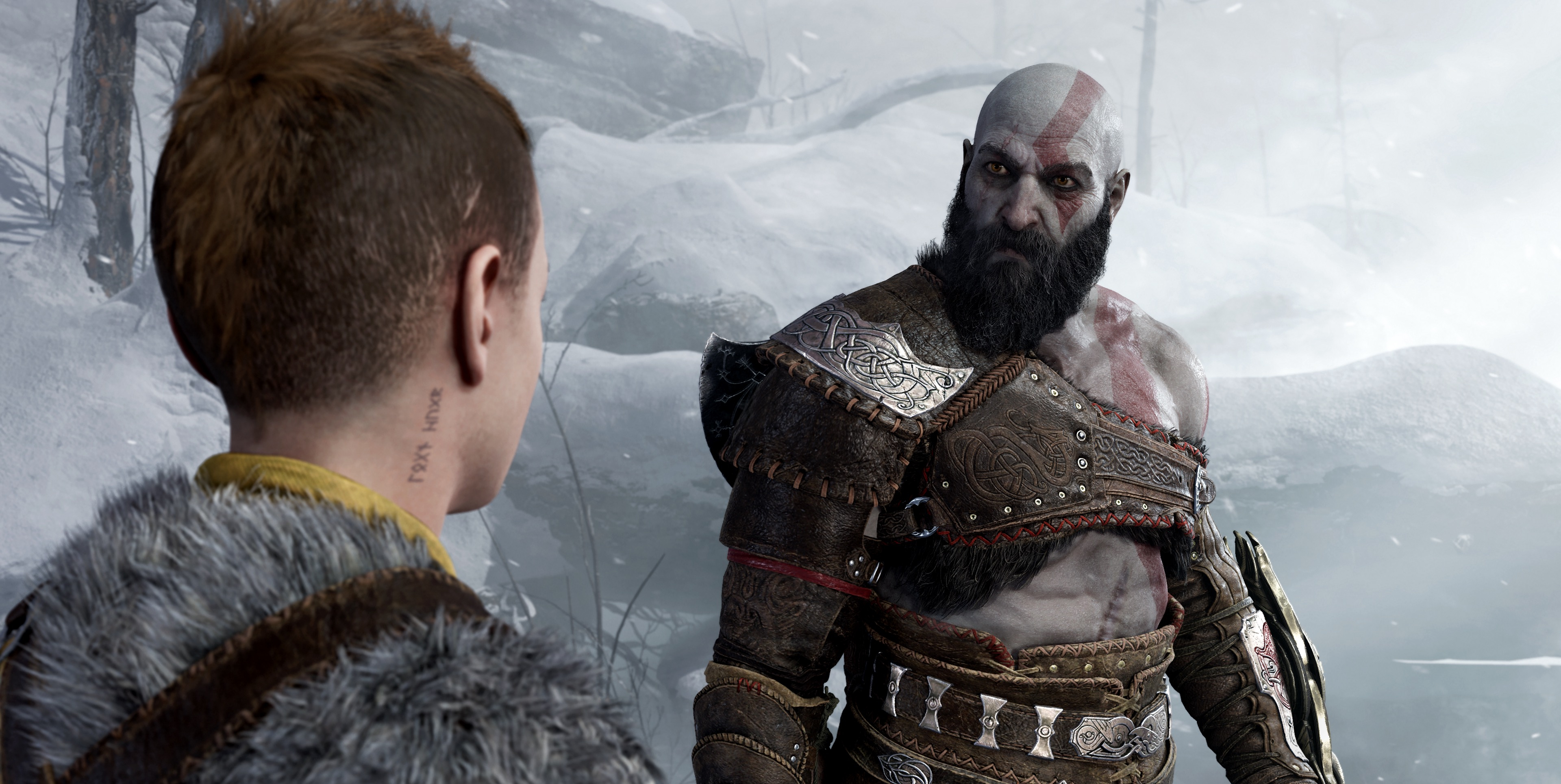

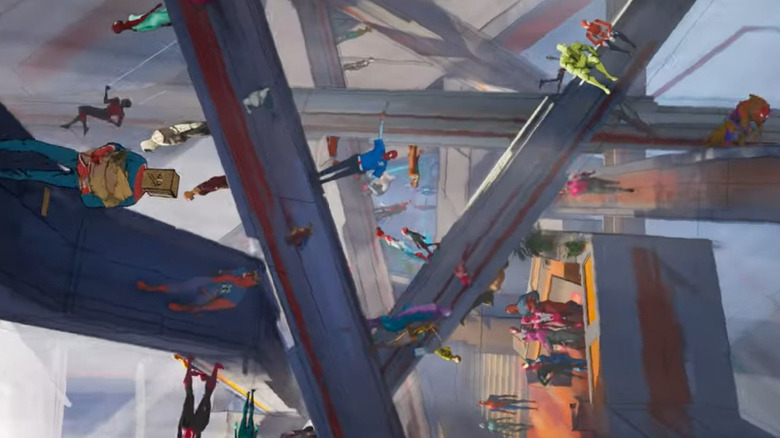
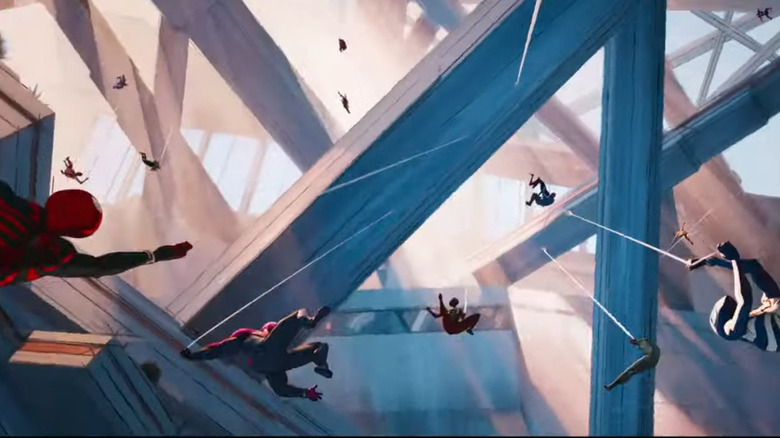
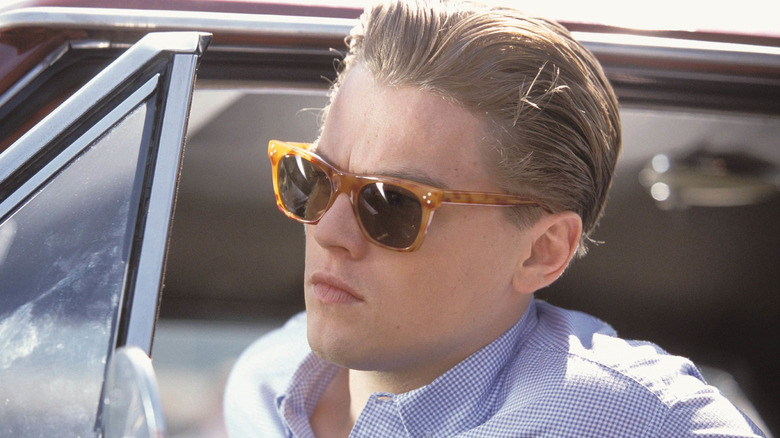
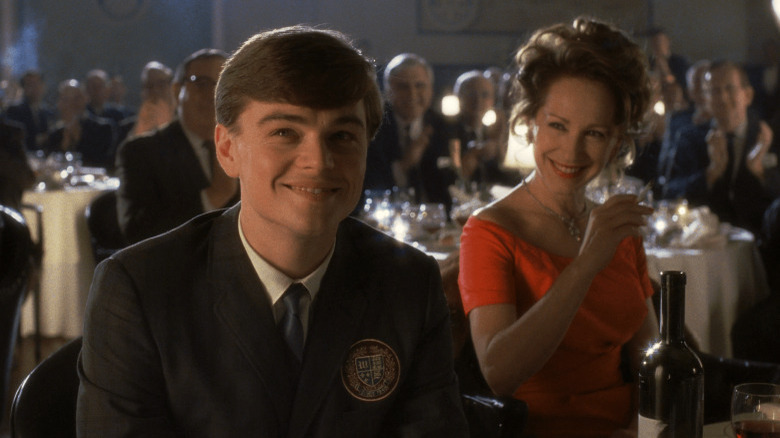
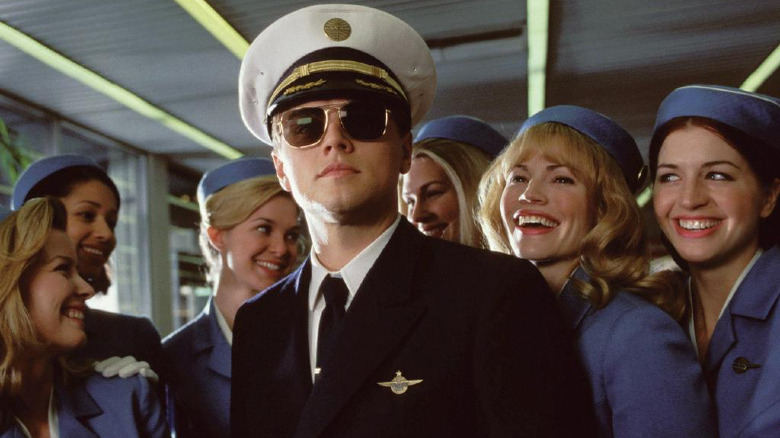
 Navi vs. Ada Lovelace! | AMD RDNA 3 architecture marks the use of a multi-chip module design for the first time in consumer GPUs, similar to what we have been seeing with Ryzen on the CPU side. The smaller dies seem to afford higher yields and reduced manufacturing costs, which are being passed on to the consumer. In this review, we take the new Radeon RX 7900 XTX and RX 7900 XT for a spin and see if they are indeed capable of taking on Nvidia's Ada juggernaut at more reasonable price points.
Navi vs. Ada Lovelace! | AMD RDNA 3 architecture marks the use of a multi-chip module design for the first time in consumer GPUs, similar to what we have been seeing with Ryzen on the CPU side. The smaller dies seem to afford higher yields and reduced manufacturing costs, which are being passed on to the consumer. In this review, we take the new Radeon RX 7900 XTX and RX 7900 XT for a spin and see if they are indeed capable of taking on Nvidia's Ada juggernaut at more reasonable price points.

